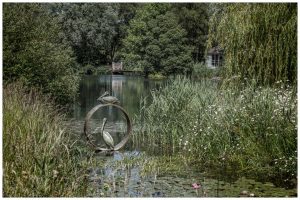The Camera Rules – Part 2
The first part of this article can be found here.
It is a camera where the battery life is so poor that the manufacturer supplies a spare and it is unlikely that any more than 50 shots will be possible from a single charge. Heavy users regularly carry half a dozen or more batteries. Excessive noise becomes apparent above ISO 400, but it is preferable to keep to the base ISO of 100 or 200 at a push. Despite having just a 14 megapixel sensor, Raw files are 50 megabytes in size. It takes six or seven seconds to write those files before it is possible to review a shot.
It is one of the very few cameras not supported by Adobe Camera Raw or just about any other Raw conversion application for that matter. The main option is to use the software supplied by the manufacturer, which remains clunky even after a number of revisions. This results in an extended and fiddly post capture workflow with additional steps. I extract JPEG images for review and create 16 bit TIFF files imported into Lightroom to process those I want to take further. Those TIFF files are huge and the workflow cumbersome.
I describe this camera as the worst in the world and I am not entirely joking. Why would I want to use such a thing, let alone purchase a second one? Well, it is not all bad news and the Sigma DP2 and DP3 Merrill models I own have both have superlative lenses, the DP2M especially. The menu system, is intuitive and allows settings to be adjusted quickly. Image quality goes far beyond what might be expected of a 14 MP sensor, which is responsible both for the camera’s good points and its faults.
It is Sigma’s second generation version of its Foveon sensor, which uniquely mimics film as red, green and blue tonal values are recorded at each pixel. Due to this, Sigma claims that each Foveon pixel is worth three of a conventional sensor‘s and overall is equivalent to 46 megapixels. That’s dubious and in practice it lies somewhere in between, at around an equivalent of 30 MP. The design does mean that light has to penetrate three layers of silicon rather than just one, which is not good for low light performance and results in noise becoming an issue at higher ISOs.
There is only one reason to put up with this amount of inconvenience, the results which fully justify working within the restrictions imposed by the camera’s operation. Tonality is smooth and the images are sharp out of the camera, rendered in a film like way. They have a pleasing look and feel which is unlike those produced from a more conventional sensor. While I will not pretend that I use the Sigmas regularly, not being well suited to spontaneous photography, they are an option when I am able to take my time. While the cameras are not quite small enough to be easily pocketable, the image quality is a revelation from something so compact.
As the company acknowledges, its Foveon based cameras are unlikely to be anything other than niche products for enthusiasts. When the Merrill models were first released, the AF was sluggish (since improved with firmware updates) and the cameras expensive, which further limited their appeal. I myself only bought my DP2 Merrill out of curiosity when Sigma dramatically reduced the price ahead of the introduction of its current Quattro models. They form a useful addition to my camera bag and I would not want to be without them. For anyone wishing to experiment and can find a used one at a reasonable price, it is worth trying. If it does not work out, it should be possible to sell the camera on without too much of a loss, but it could just become addictive.
The low resolution JPEG accompanying this article can only hint at what these cameras are capable of. The image was shot as Raw file and a TIFF file created using Sigma’s Digital Photo Pro software using the default conversion settings. The TIFF was imported into Lightroom and initial adjustments applied, with final processing undertaken in Photoshop CC.
With a bit of searching, example Raw files can be downloaded from the Internet for those who wish to see the actual image quality and try out the workflow before committing to a camera purchase.
